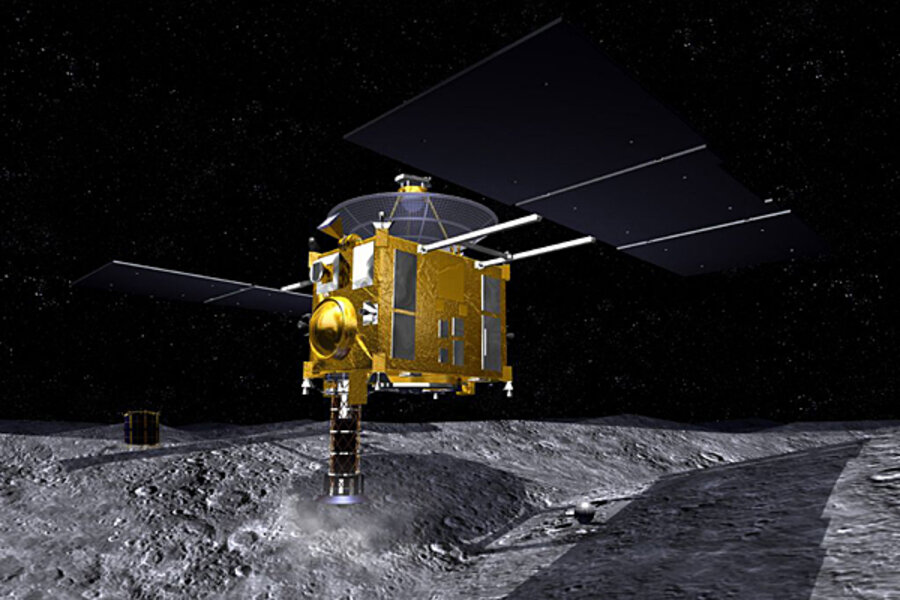After visiting asteroid, Hayabusa space capsule returns to Japan
Loading...
A space capsule that may contain the first-ever samples from an asteroid in deep space has begun one last trek from its Australia landing site to Japan – its final destination after a billion-mile voyage.
The capsule, which parachuted back to Earth Sunday in the Australian outback, is all that remains of Japan's seven-year Hayabusa mission that visited the asteroid Itokawa in 2005. The basketball-sized capsule is being flown to Japan for its long-awaited opening to see, once and for all, if it actually grabbed samples of an asteroid.
"JAXA has commenced to transport the retrieved capsule to Japan," the Japan Aerospace Exploration Agency (JAXA) said in a statement.
The capsule is expected to arrive at JAXA facility in Sagahimara, Japan, on Friday for a grand opening that will cap a 3.75 billion-mile (6 billion-km) to a near-Earth asteroid. An international team of scientists from JAXA, NASA and Australia will be on hand to begin cataloging any asteroid samples that may be inside. [Photos: Hayabusa's fiery Earth return.]
"Certainly, any samples retrieved from Itokawa will provide exciting new insights to understanding the early history of the solar system," Tommy Thompson, NASA's Hayabusa project manager from the Jet Propulsion Laboratory in Pasadena, Calif. , has said."This will be the icing on the cake, as this mission has already taught us so much."
Japan launched the Hayabusa mission in 2003 to visit the asteroid Itokawa, which the probe reached in 2005. The ambitious $200 million expedition is the first mission ever to attempt to return samples of an asteroid.
But the Itokawa rendezvous was not entirely smooth.
Hayabusa landed on the asteroid several times to try and grab samples in its return capsule after a projectile device designed to kick up surface material. A small lander, called Minerva, also failed in its bid to set down on Itokawa.
A fuel leak and harrowing – but temporary – loss of communication, reaction control wheel malfunctions and ion engine failures also plagued the mission, adding three years onto its round trip to an asteroid.
Despite those hurdles, the probe's actual re-entry and capsule landing on Sunday went off without a hitch. Even without an asteroid sample, the mission has been an amazing achievement, scientists said.
"It's remarkable that they are managing to get this spacecraft back," said Don Yeomans, NASA's project scientist for the Hayabusa mission.
Yeomans said even a few small grains from the asteroid Itokawa would be a critical find for scientists hoping to understand how such space rocks formed about 4.6 billion years ago when our solar system was young.





